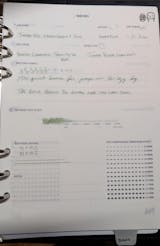

















Ink Sample - Yoseka Ceramics
- Regular price
- $3.60
- Sale price
- $3.60
- Regular price
-
- Unit price
- / per
Ink Sample - Yoseka Ceramics
Produced in collaboration with Ink Institute and ceramic artist Li Yan Xun, our Yoseka Ceramics Ink Series showcases 8 unique colors inspired by ceramic glazes from the Yuan, Ming, Tang, Qing, and Song Dynasties, spanning 10 centuries of Chinese color and history. We worked closely with Li to select these 8 colors from his Yan Cai color project, in which he used chemical experimentation to revive the formulas of over 60 historical glazes, to represent the brilliant and splendid history of Chinese ceramics.
- Yuan Ji Blue ( 元代霽藍) – rich blue with a wine-red sheen
- Tang Mi Se Blue (唐代秘色青) – grey-green with hints of blue
- Song Black (宋代黑) – cool black with hints of brown
- Qing Yan Zhi Red (清代胭脂红) – carmine red with purple shading
- Qing Shan Hu Red ( 清代珊瑚红) – coral red
- Qing Purple (清代紫) – eggplant purple with green sheen
- Ming Yellow (明代黄) – golden yellow with antique-brown shading
- Ming Kong Que Blue ( 明代孔雀藍) – peacock blue with a warm sheen
- Yoseka Ceramics Inks
About Li Yanxun: Li Yan Xun is a ceramic artist and the founder of the Yanshan Art Museum in Jingdezhen, China. Hailing from a family of ceramic artists, he received formal training at the renowned Jingdezhen Ceramic Institute before starting his own ceramics studio. In addition to inheriting the “watercolor glaze” techniques pioneered by his father, Li Xiaocong, Li Yan Xun spent almost a decade researching and cataloguing the glaze pigments used in Jingdezhen during the Ming and Qing Dynasties. Experimenting with chemical methods like glaze reduction tests and pure reagent analyses, he revived more than 60 historic glazes and documented each formula. Through this color project, titled Yan Cai, Li pursues the notion that an artist can be involved in every phase of their art-making process, from the development of the medium, to the physical craftsmanship, to the firing and completion of the object.
Our ink samples will come in these tiny adorable glass bottles. They can hold up to 5ml, and you can pick either 3ml or 5ml of each color.
These bottles are meant to be reusable. You can return your 10 empty bottles to us, and your next sample ink will be on us.
Please note that orders containing ink samples may require an extra 2-3 days time as we make our ink samples to order.









I almost wish I hadn't gotten a sample of Tang Mi Se Blue, ALMOST. I love this color; it is exactly what I was looking to fill one of my green pens with. Hopefully, the full bottle will be available at some point.
Not tested yet but Yoseka’s ink samples are generously good! Love this series and the matching stickers, as well. (Sold separately)
Not tested yet but Yoseka’s ink samples are generously good!

